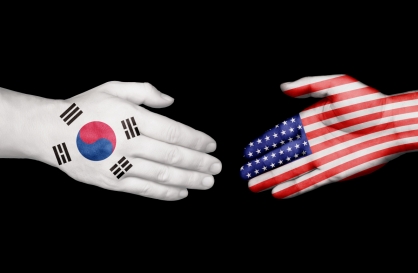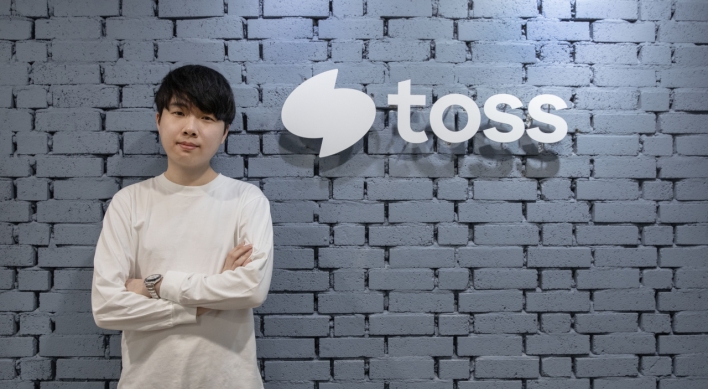[Editorial] Increase reunions
Time running out for elderly members of separated families; video reunions worth a try
By Korea HeraldPublished : Aug. 21, 2018 - 17:14
A group of 89 South Koreans met with their North Korean relatives at the Kumgangsan Resort in North Korea as part of a three-day reunion for families separated by the 1950-53 Korean War. They will return to the South on Wednesday.
Likewise, for three days beginning Friday, 83 North Koreans will be reunited with their South Korean relatives at the same hotel.
Participants were selected by lottery, and most of those who wanted to be there had to take comfort in watching the event on television. It is uncertain whether those still waiting will ever get their chance. As long as the family reunions are conducted in this manner, the prospects for many appear dismal.
For families separated after the truce was signed on July 27, 1953, the youngest members are 65 years old. Reunions with husbands, wives, brothers and sisters have reportedly diminished because so many people in those age groups have already passed away.
Reunions began in 1985, and this latest one marks the 21st. To date, about 2,000 South Koreans have been reunited with family members living in North Korea. As of May 31, there were 132,124 South Koreans registered as members of families separated by the war -- of those, 75,234 were dead and 56,890 still alive. Of the survivors, 85.6 percent were in their 70s or older. The figures for North Korea would probably look similar.
Hundreds of these family members die every month of age-related causes. This is why reunions should be held more often.
If 100 South Koreans were reunited with their North Korean relatives at every one of these events, there would have to be about 560 more reunions to give every remaining family a chance.
From a humanitarian point of view, it is desirable to allow members of separated families to be reunited whenever they want. Considering their advanced age, the situation is urgent. At the very least, the reunions should be bigger in scale so that more people can meet with their relatives in one go.
Before it is too late, reunions must be held regularly and at short intervals. If that is not possible, they must be held once or twice a year. And if face-to-face reunions prove impractical to arrange, the use of video devices is worthy of serious consideration. After all, we live in an era when people can communicate with smartphones no matter how far apart they are.
Reunions between members of separated South and North Korean families have been negatively affected by the security situation on the Korean Peninsula and by strained inter-Korean ties. The previous reunion took place in October 2015, but after the North tested its sixth atomic bomb in January of the following year, Seoul-Pyongyang ties were frozen and the reunions ceased.
One obstacle is that North Korea treats the family reunions as a bargaining chip in inter-Korean relations. That’s wrong. Humanitarian issues should not be politicized.
The plight of families torn apart by war is a human rights issue. It is tragic for the victims to have to live without even knowing whether their families are still alive. This tragedy must end, and anyone with relatives on the other side should be able to communicate freely.
It is fortunate that the reunions have resumed in accordance with the April 27 inter-Korean summit declaration. Now it is time to establish a genuine solution.
It is important to improve inter-Korean relations, ease military tension, establish a peace regime on the Korean Peninsula, and promote human exchanges and economic cooperation. But for first-generation members of separated families, those solutions may not come soon enough.
It is hoped that leaders of South and North Korea will strike a Copernican deal at their third summit next month.
-
Articles by Korea Herald



![[AtoZ into Korean mind] Humor in Korea: Navigating the line between what's funny and not](http://res.heraldm.com/phpwas/restmb_idxmake.php?idx=644&simg=/content/image/2024/04/22/20240422050642_0.jpg&u=)


![[Herald Interview] Why Toss invited hackers to penetrate its system](http://res.heraldm.com/phpwas/restmb_idxmake.php?idx=644&simg=/content/image/2024/04/22/20240422050569_0.jpg&u=20240422150649)

![[Graphic News] 77% of young Koreans still financially dependent](http://res.heraldm.com/phpwas/restmb_idxmake.php?idx=644&simg=/content/image/2024/04/22/20240422050762_0.gif&u=)







![[Exclusive] Korean military to ban iPhones over security issues](http://res.heraldm.com/phpwas/restmb_idxmake.php?idx=652&simg=/content/image/2024/04/23/20240423050599_0.jpg&u=)



